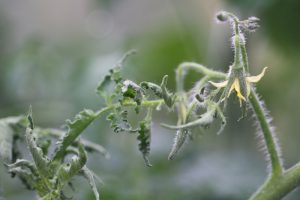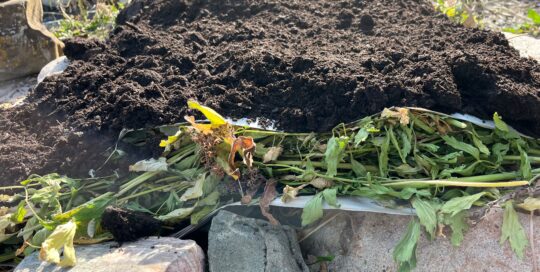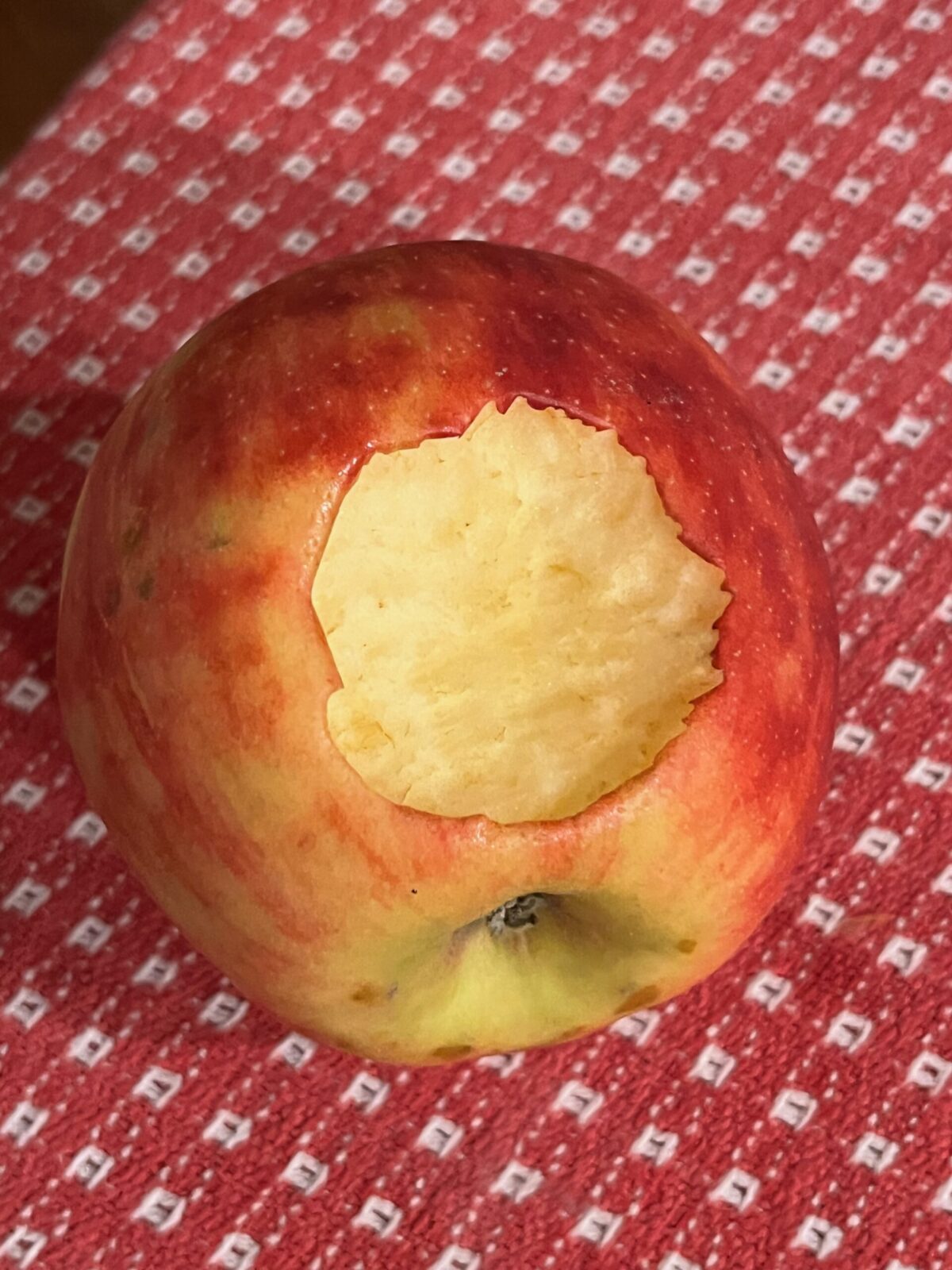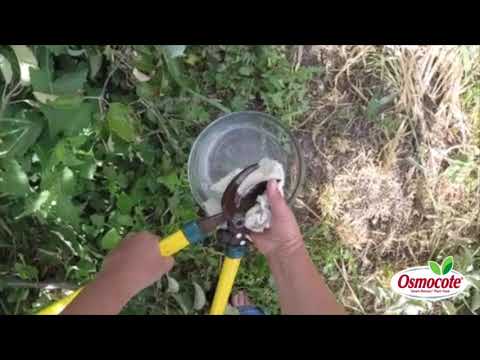Curling Leaves on Tomato Plants
Views: 12168

Some of my tomato leaves are curling.
Of course, my first thought was herbicide damage. But since it didn’t have the classic shepherd’s crook curled leaves, I thought something else must be happening.
So the hunt started to figure out why my glorious grafted tomatoes are suffering.
Thrips?
The Master Gardeners at the community garden plot had thrips this year in theirs. They noticed the tiny pests after seeing a similar leaf roll phenomena. I immediately took the loop (a small magnifying instrument we old timers used to look at slides in the pre-digital days) and scoured the backs of the leaves, but didn’t find anything. My other clue that there wasn’t a pest problem is there weren’t any specifically damaged areas where the thrips (or mites) were feeding. The leaves often have darkened areas, and sometimes will even die.
If you do discover you have pests, you’ll want to get rid of them so they don’t suck the life out of your plants. In addition, thrips are vectors for the spotted wilt virus, which is not something you want if you hope to harvest tomatoes. Managing thrips can range from insecticidal soap to Malathion (just be sure to read the label to see how soon you can harvest after you use a pesticide). And watch out because they will bite! For mites, a sulfur based spray or dust seems to do the trick.
Tomato Viruses that create curling leaves
Since pests were off the list, my next daunting task was to consider the myriad of viruses that plague tomatoes. Wow. There’s the stuff of horror stories. Pretty much any horrible disfiguration you can think of in the tomatoes has a virus that will make that happen. But I eliminated the possibility of a virus, primarily because there is no yellowing of the leaves or mottling of any sort. If they were breaking out in colors I would suspect some sort of infection.
Seasonal Conditions
So that leads me to believe I’m dealing with a physiological leaf curl. This makes perfect sense because we’ve had an awfully hot and dry summer. We had temperatures climbing well into the 90s in June (much earlier than normal), and I have to say that I wasn’t as diligent as I should have been when it comes to watering. It was not consistent either, in the timing or the depth of the watering.
So, after piecing together the puzzle pieces, it looks like the conditions of the season caused this to happen. The good news is it really shouldn’t affect fruit production, and the plants look fantastic outside of the curling issue. The best I can do is to feed the plants and make sure they are on a better watering schedule.
Figuring out what is causing symptoms on your plants takes a bit of detective work, but it certainly feels good when you’re confident you know what’s happening. It’s much better to deal with a known quantity than to guess!
Meet Amy Grisak
Amy is a freelance author and photographer in Great Falls, MT who specializes in gardening, foods, and sustainable agriculture. She provides information on every kind…
Amy's Recent Posts

What Garden Debris Can You Compost?








